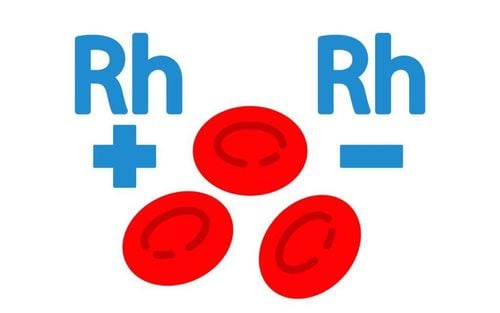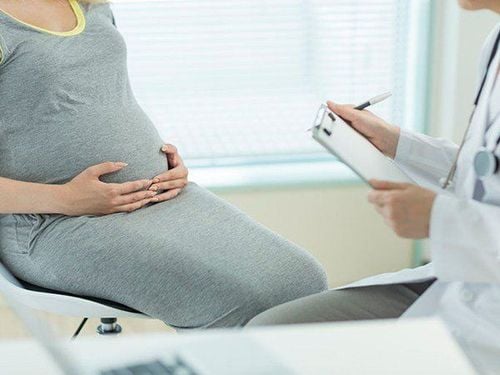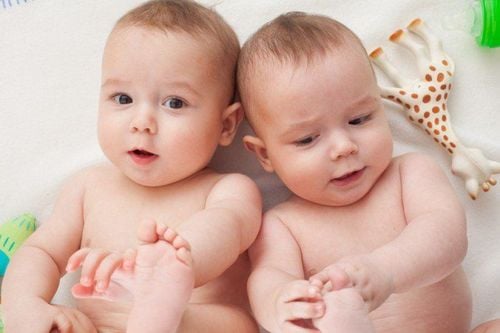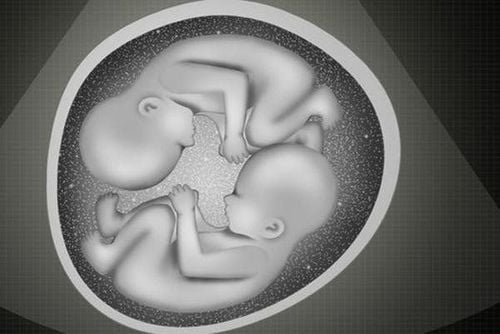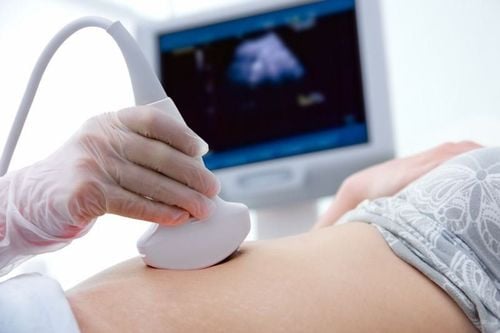This is an automatically translated article.
For many women, pregnancy with fraternal twins is rare and a joy. However, this also carries the potential for an increased risk of complications.
1. Why is there a phenomenon of fraternal twins?
With identical twins, also known as identical twins, the cause is that an egg is fertilized with a sperm, creating a zygote. This zygote will continue to divide into two parts immediately after fertilization to develop into two separate individuals.
With fraternal twins, also known as non-identical twins, is the phenomenon of two eggs released at the same time and fertilized with two completely separate sperm in the same batch.
Fraternal twins will have more genetic differences than identical twins. Identical twins will have almost 100% similarity in their DNA structure, while with fraternal twins, the DNA structure will only be about 50% similar. So, fraternal twins, even though they were born at the same time, are not necessarily the same sex or have exactly the same appearance.
There are also cases where a mother is pregnant with fraternal twins because she was already pregnant, but conceived again when one of her eggs fertilized another sperm in the same month. This is more likely to happen when a woman is already pregnant and ovulating again. The phenomenon of forming a fetus when a second egg is fertilized by another sperm that comes later is called ectopic multiple fertilization.
Trắc nghiệm: Bạn có hiểu đúng về dấu hiệu mang thai sớm?
Các dấu hiệu mang thai sớm không phải chỉ mỗi trễ kinh mà còn có rất nhiều dấu hiệu khác như xuất huyết âm đạo, ngực căng tức,… Điểm xem bạn biết được bao nhiêu dấu hiệu mang thai sớm thông qua bài trắc nghiệm này nhé!
2. Factors that increase the likelihood of fraternal twins
According to Medical studies, having twins is mostly dependent on genetic aspect. The ability to have identical twins may not be due to a genetic problem, but with fraternal twins, genetic factors may be involved. In addition, a number of other factors are likely to increase the chance of fraternal twins, including:Mother's age: If a woman is over 30, the odds are higher, because at this age , a woman's body will release more of the hormone FSH, a hormone that stimulates ovulation, leading to an increased ability to ovulate two eggs at the same time. Genetic factors: If a pregnant woman has twins or has a twin sister in her family, the chance of having twins is also increased, related to genetic problems. In addition, if both the paternal side and the maternal side have had twins, the chances of sisters having twins will increase. Women with an elevated BMI (body mass index) above 30 were more likely to have twins than those with a stable BMI at low levels. This is because excess fat in the body has the effect of increasing estrogen levels. Tall women are more likely to have twins than short women. The more times you get pregnant, the higher your chances of having fraternal twins. Women who often breastfeed are more likely to have twins than women who don't. Specifically, one study has shown that the rate of twins in women who breastfeed is up to 11.4%, while women who do not breastfeed, this figure is only 1.1%. There are studies that suggest that women who consume a lot of dairy products are more likely to have twins than other women. The application of technology in assisted reproduction, especially in vitro fertilization, has the potential to stimulate more ovulation each month and increase the rate of fraternal twins.
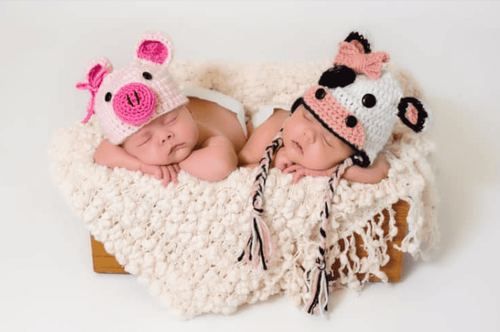
3. The development of fraternal twins in the womb
During the first 8 weeks after the 2 eggs have been fertilized, they will begin to develop and produce hundreds of cells, which are firmly attached to the wall of the mother's uterus. Each baby is placed in a separate amniotic sac and begins to form parts of the body. By week 8, babies will have two arms and two legs and begin to develop their nervous system.
By 12 weeks old, two babies begin to kick and stretch, fingernails and eyelids also begin to appear and develop. By 16 weeks, each baby will have formed a unique fingerprint and by week 20, baby's hair will start to appear.
By 24 weeks of age, eyebrows begin to form. Usually by 28 weeks, your twins can open their eyelids and form the first layers of fat under the skin. By the 32nd week of pregnancy, the arms and legs of the babies are relatively fully developed. At this point, the two babies are ready to be born in the next few weeks. In case of fraternal twins, there will be two placentas for two fetuses and each baby will be in a different amniotic membrane in the mother's uterus.
At birth, fraternal twins may or may not be identical. Because 50% of the genetic makeup of fraternal twins will be completely different. When born, the hair color, skin color, face, body shape, weight and size of fraternal twins may not be the same if their parents have different skin colors.
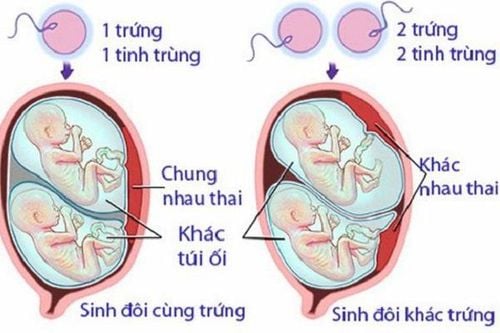
4. Possible risks when pregnant with fraternal twins
Some complications are more likely to occur when a woman is pregnant with fraternal twins, similar to other twin pregnancies. Common pregnancy complications include:
Babies may be born with a lower birth weight for their normal gestational age. In the final stages of pregnancy, when the babies have grown quite large, the space in the uterus will be tight. This will make the development of the baby is also somewhat limited. The risk of high blood pressure during pregnancy is also higher. Risk of gestational diabetes. Potentially higher risk of miscarriage and the possibility that one of the babies will die at birth. The risk of preterm birth is increased. Therefore, pregnant women with twins need to be monitored regularly and have regular antenatal check-ups so that doctors can promptly detect and prevent dangerous situations.
Please dial HOTLINE for more information or register for an appointment HERE. Download MyVinmec app to make appointments faster and to manage your bookings easily.




